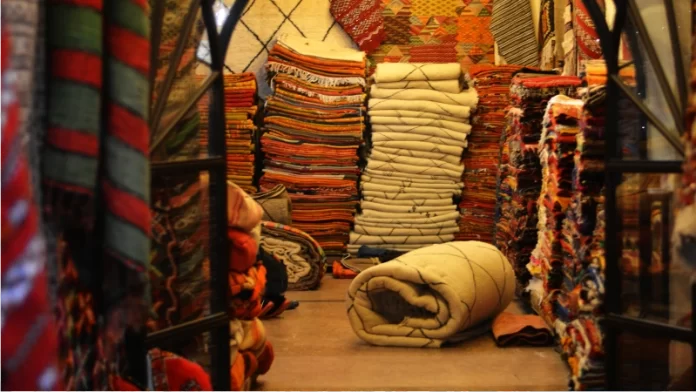Afghanistan is gearing up to significantly increase its carpet production across the country in response to growing demand, particularly from China. The Ministry of Industry and Commerce announced this move on Tuesday, with ambitious targets to employ 1.5 million people in the carpet sector, a pivotal step towards revitalizing the Afghan economy.
Afghan rugs have long been celebrated for their exceptional quality and craftsmanship. However, following the Taliban’s takeover of Afghanistan in 2021, the carpet industry experienced a sharp decline in demand, and the nation’s economy was thrown into turmoil.
Despite the challenging circumstances, Afghanistan made remarkable progress in 2022, achieving $20 million in carpet exports. Production was distributed across 18 provinces, providing employment for over a million individuals, according to Abdul Salam Jawad, a spokesman for the Ministry.
Jawad ministry spokesman Abdul Salam Jawad told “Last year, the export of carpets through the ports of different provinces of Afghanistan was very significant. The plan is to start carpet production throughout the country this year.”
Carpets emerged as star attractions during Afghan trade exhibitions both domestically and abroad. Key markets for Afghan carpets included China, Pakistan, Turkiye, and the UAE. “During exhibitions held in India and China, carpets took the top spot,” Jawad noted.
For the current year, Afghanistan aims to provide employment for 1.5 million people within the carpet industry. The nation’s high unemployment rate, possibly as high as 30 percent according to Human Concern International, highlights the urgent need for job creation.
China, in particular, is emerging as a lucrative market for Afghan carpets. Dil Jam Manan Qassimy, CEO of the carpet exports company Qassimy Brothers Carpet Co., explained that while carpet exports to China had decreased in recent years, the resumption of Chinese visas for Afghans had revitalized the industry.
“China is a good market for Afghanistan’s carpets,” Qassimy stated. “The Chinese are very wealthy people; they are very good customers for our carpets. The carpets we produce are of high quality and are relatively expensive. Chinese people are highly interested in our carpets and are always eager to purchase them, making China an appealing market for Afghan carpets.”
Meeting international demand has required some carpet weavers to adapt traditional designs. Mohammad Walizada, director of an Afghan rug company in Kabul with 30 years of experience, described how changes to their products have made them more marketable on the global stage.
“Afghanistan’s old carpets and traditional colors have limited international appeal and are mostly sold within Afghanistan,” said Walizada. “We have made necessary adjustments based on current demand, which has caught the attention of many Chinese buyers.”
Participation in exhibitions in China has expanded their customer base, and they are now dispatching new carpet designs to meet Chinese demand. Approximately 15 percent of their products are now purchased by Chinese customers, reflecting the growing interest in Afghan carpets in China.
In conclusion, despite the recent challenges faced by the Afghan carpet industry, the resurgence of demand, particularly from China, is offering a glimmer of hope for this vital sector. The government’s efforts to boost production and create much-needed jobs signal a positive step toward economic recovery in Afghanistan.




